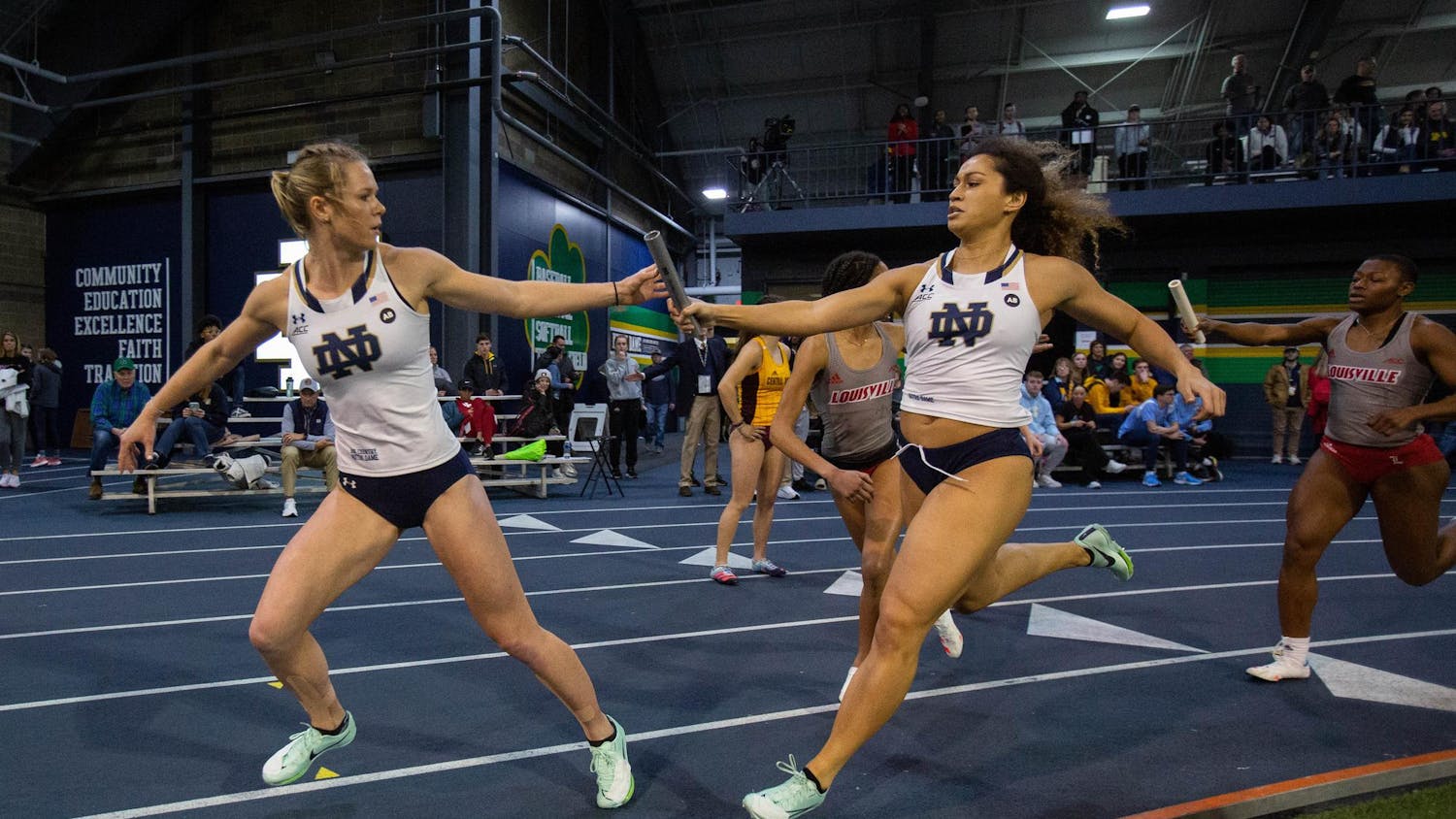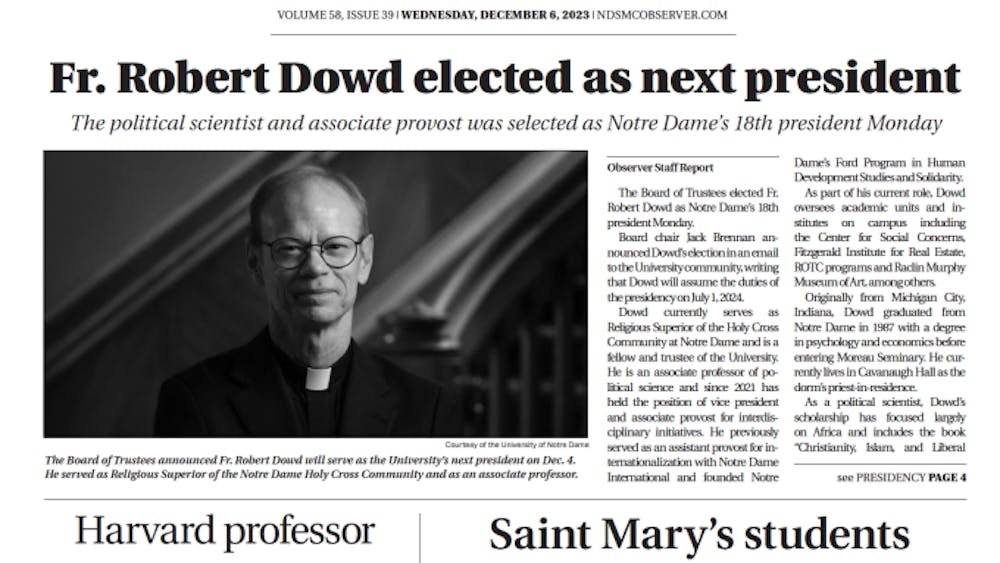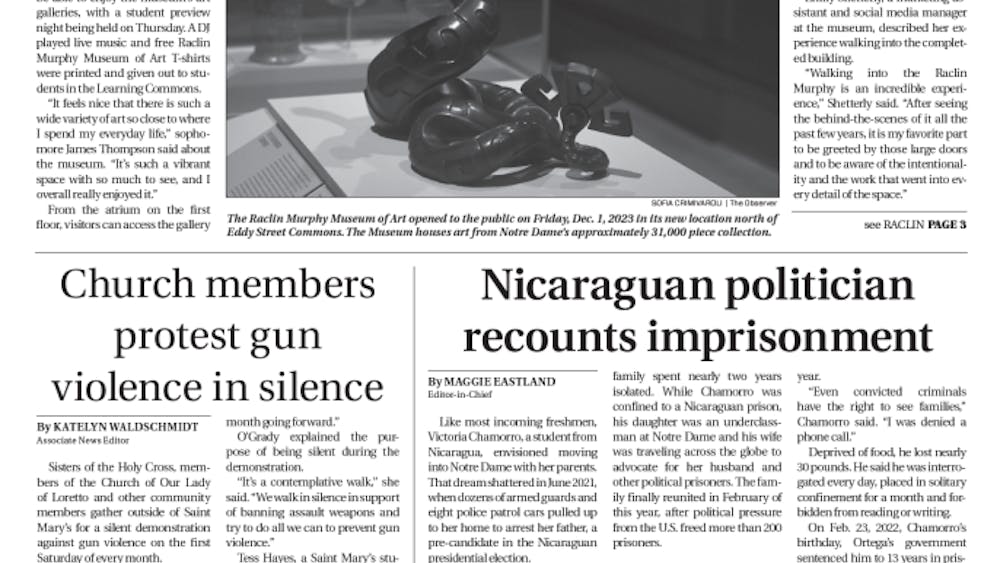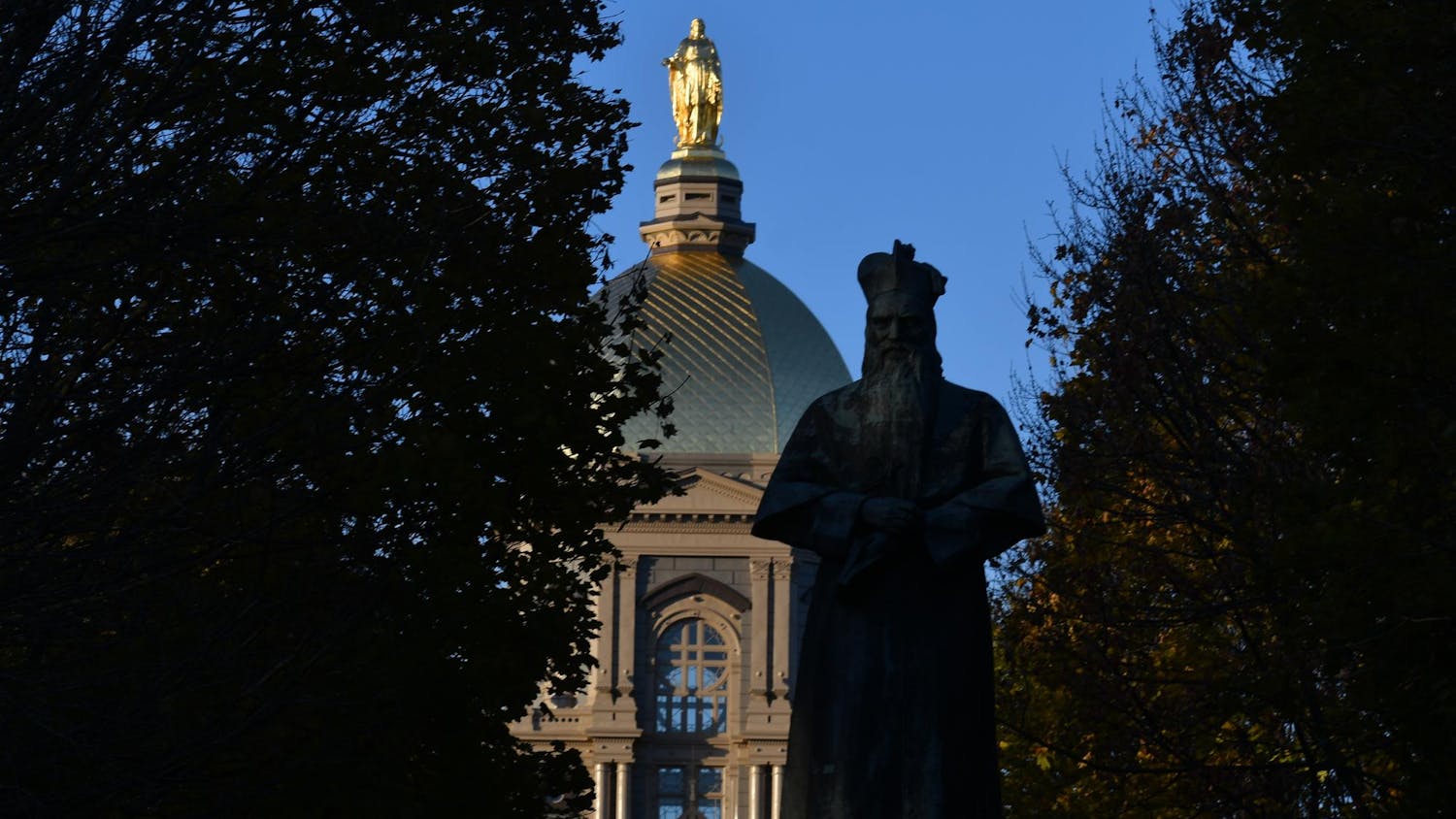Thanks to the renovation of Hesburgh Library, we'll soon be able to get a cup of coffee in the middle of winter without having to trudge all the way over to LaFortune - and I'm looking forward to that as much as anyone. But making the library "a gateway to knowledge and intellectual endeavor" means more than just reorganizing its layout. At its core, Hesburgh Library also needs a strong and well-managed collection of books, periodicals and electronic resources.
Scholars in the humanities and social sciences depend on the library just as much as those in the natural and applied sciences depend on their lab space. Right now, Notre Dame is doing fine for a school whose focus on graduate and faculty research is only a few decades old - but it's not yet on course to becoming "the preeminent Catholic research institution in the world," one of the goals stated on the library renovation Web site.
According to the Association of Research Libraries, the Notre Dame library system has about 3.39 million volumes, the 61st largest collection among all U.S. research universities. In 2008, the library purchased just under 76,500 volumes, at a growth rate of about 2.2 percent, 54th overall among U.S. research universities. The library has slipped in standing every year since 2001, when the library purchased approximately 102,000 volumes and ranked 29th overall in volumes added.
Our collection is decent, but in the bottom half of research libraries in the United States, and it is lagging behind our peers, our betters and even some of our subordinate institutions. Notre Dame's collection is smaller than those of peer institutions such as Duke (5.9 million volumes), Northwestern (4.8 million), Brown (3.8 million) and Vanderbilt (3.44 million). Last year, ND also acquired fewer volumes than those four peer schools; football rivals Penn State (184,000) and the University of Michigan (147,000); and even other universities that, like Notre Dame, have no medical schools, such as Illinois Champaign-Urbana (208,000), BYU (185,000), Colorado (98,800), SUNY Albany (92,500) and Michigan State (85,000).
To put this in perspective, if all the research universities in the ARL rankings acquire books at the same rate they do now for 10 years, Notre Dame will only have advanced to 56th place in total volumes held. If Notre Dame doubles its acquisitions to 170,000 volumes per year, it will advance to 35th place. In order to break into the top 10 percent of academic research libraries in ten years, Notre Dame would have to increase its acquisitions by 600 percent, to 440,000 volumes per year.
Why is all this important? First, the University is developing programs of study in areas such as Islamic, African, South and East Asian, and Gender Studies, which are not currently well-represented in the library collection. Second, the University expects to increase its graduate student population by 1,000 - over one-third - in the next 10 years, and cannot support the research of these graduate students without considerably increased library collections. Third, in the words of Notre Dame's University Committee on Libraries, "staff acquisition remains a concern of which the library is well aware;" that is, the library staff is already stretched thin, both in terms of front-line staff like subject librarians and support staff like cataloguer, archivists, resource coordinators, and so on.
I'm not the only person who recognizes that the library collections need attention. Over the summer, the faculty began circulating an online petition (www.nd.edu/~smaccorm/petition.shtml), which called upon ND's administration to do two things: to make the library collections extensive enough to sustain faculty, graduate and undergraduate research through a combination of one-time expenditures (on the order of the $76 million spent on Jordan Hall or the $69 million budgeted for Stinson-Remick Hall) and permanent annual budget increases; and to hire the staff necessary to support such an expansion. Down the road, this also means that the library will have to increase its capacity, probably through the use of an off-site depository for lesser-used volumes.
Obviously, the library administration recognizes these needs, and the financial climate will probably delay any such expansion. But in the meantime - if donating to the University with specific instructions that your gift go toward library acquisitions isn't feasible - you can help put Hesburgh Library on the right track by writing to Provost Thomas Burish (tburish@nd.edu), Chairman of the Board of Trustees Richard Notebaert (notebaert.2@nd.edu) and Director of the Library Jennifer Younger (younger.1@nd.edu) to express your support for these proposals.
Darryl Campbell is a third year Ph.D. student in the history department, and was a columnist for The Observer from 2007 to 2009. His writing has appeared in the Christian Science Monitor and The Stimulist, and he is a regular contributor to the web magazine The Bygone Bureau (bygonebureau.com). He can be contacted at dcampbe6@nd.edu
The views expressed in this column are those of the author and not necessarily those of The Observer.









